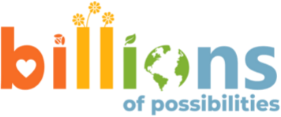Read This.
As we work through the 7 Problems with Problems to get a more nuanced understanding of the problem, we also need to think deeply about our relationship to both the problem itself and the people who are most deeply experiencing it. This means attending to the role folks most proximate to the problem currently have and should play in our work moving forward, both in theory (our intent) and in practice.
In this module, we will ask you to think about your role in the design process as well as what engagement frameworks and tools you will want to use as you engage with the people most directly impacted by the problem. These routines will be particularly important if you aren’t already engaging in these conversations regularly and fluently.

Task #1: Understand the Three Design Roles – Which Do You Play?

Read through the definitions for the three terms below: equity designer, equity design ally and equity design facilitator.
- Which best describes you and your role on this project?
- Does your team have representation for all three roles or is someone missing?
Consider these questions on your own (in whatever reflection structure works for you); share and discuss as a team.
EQUITY DESIGNER
An equity designer applies equity design towards liberation, has lived experiences with the oppressive systems being (re)designed, and is currently embedded in the community impacted by these oppressive systems.
EQUITY DESIGN ALLY
An equity design ally applies equity design towards liberation and shares their power and access with equity designers. An equity design ally does not have lived experiences with the oppressive systems being (re)designed and/or is not currently embedded in the community impacted by these oppressive systems.
EQUITY DESIGN FACILITATOR
Equity design facilitators guide equity designers and design allies through the equity design process to dismantle systems of oppression and (re)design towards liberation and healing. Equity design facilitators create space, establish guardrails, and hold themselves and designers/design allies accountable to equity design principles (we support Design Justice principles).
The terms Equity Designer and Equity Design Ally were coined by Antionette Carroll of Creative Reaction Lab, and she inspired the creation of the term Equity Design Facilitator, the definition of which was co-written by members of the Equity Design Collaborative.
Task #2: Understand and Select an Engagement Framework

Now that you’re clear on which design role you are playing, the next question is “How do you think about the ways that you engage folks in your work?” Though there are many frameworks, we want you to double-click on The Engagement Triangle by Capire.
First read through the article, then based on your unique circumstances, select an engagement aim from the options listed on page 6. For example, do you aim for your relationships with the people most impacted by the work to:
- inform decisions,
- primarily to inform decisions, and secondly to build capacity
- to primarily inform decisions and secondly to strengthen relationships
- to build capacity
- primarily to build capacity, and secondly to inform decisions,
- primarily to build capacity, and secondly to strengthen relationships,
- to strengthen relationships
- to primarily strengthen relationships and secondly build capacity
- to primarily strengthen relationships and secondly to inform decisions,
- to inform decisions, build capacity, and strengthen relationships
Depending on what your aim is, you will choose different tools and strategies (see pages 8-9). Using one of the tools above that you find most useful/relevant, can you identify where you currently are and where you would like to be? What would need to be different about how you are working or are approaching the work to move to where you want to be in terms of engagement?
Reflect individually; share and discuss as a team.
Inner Work: Reflections on Module 4

Positionality is a word used to describe where we place ourselves in relation to others in terms of our various identities, our relative power, or our role in the work we are doing. In the context of working for a more just and equitable world, terms such as ally, advocate, accomplice and co-conspirator are used to explore different levels of engagement and risk.
How do you understand your positionality in your work, organization or venture, and what type of risks to your own identity or status does the work you are doing ask you to take? Are there constraints on you that prevent you (individually) from being more deeply engaged in a way that aligns more completely with the espoused values you reflected on last week?
Next Steps & Further Study

Once you are sure that you are doing justice (not charity) work, and each of you on your team is clear on your role and the role of others, and you have an engagement framework with tools in place, you’re ready to move on.
If you’ve done some reflecting and you feel like you might need to deepen your relationships with folks proximate to the problem – not to worry! You can:
- Start by engaging in Meta-Empathy work tied to your problem. This online course can help you get started.
Bonus Materials. Additional Engagement Frameworks
In addition to Capire’s Engagement Triangle, we wanted you to have these alternative engagement frameworks in case they are helpful.
